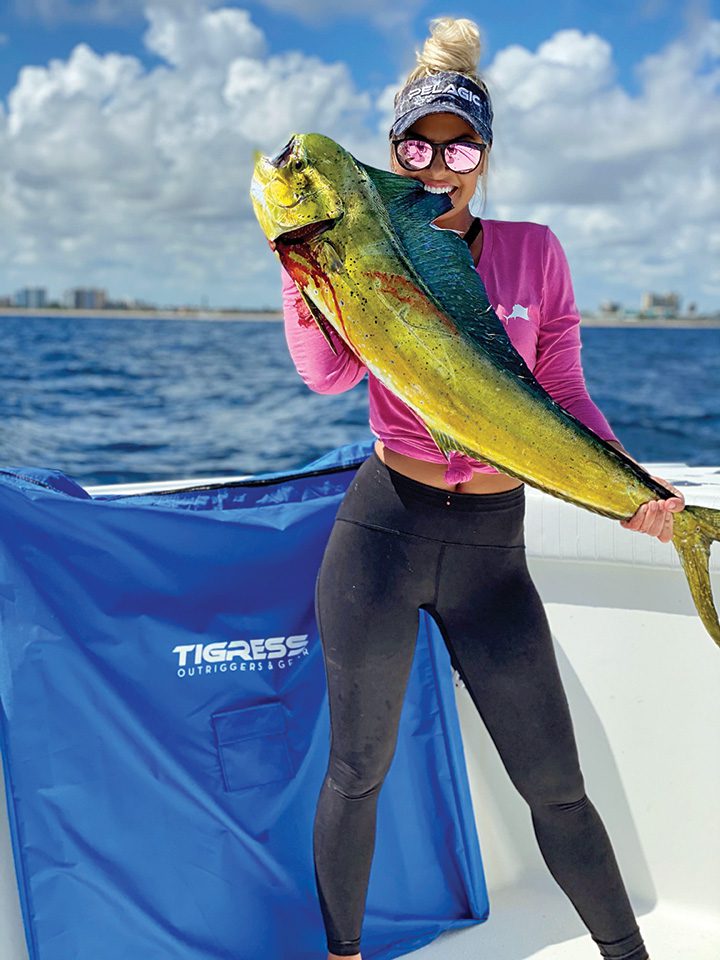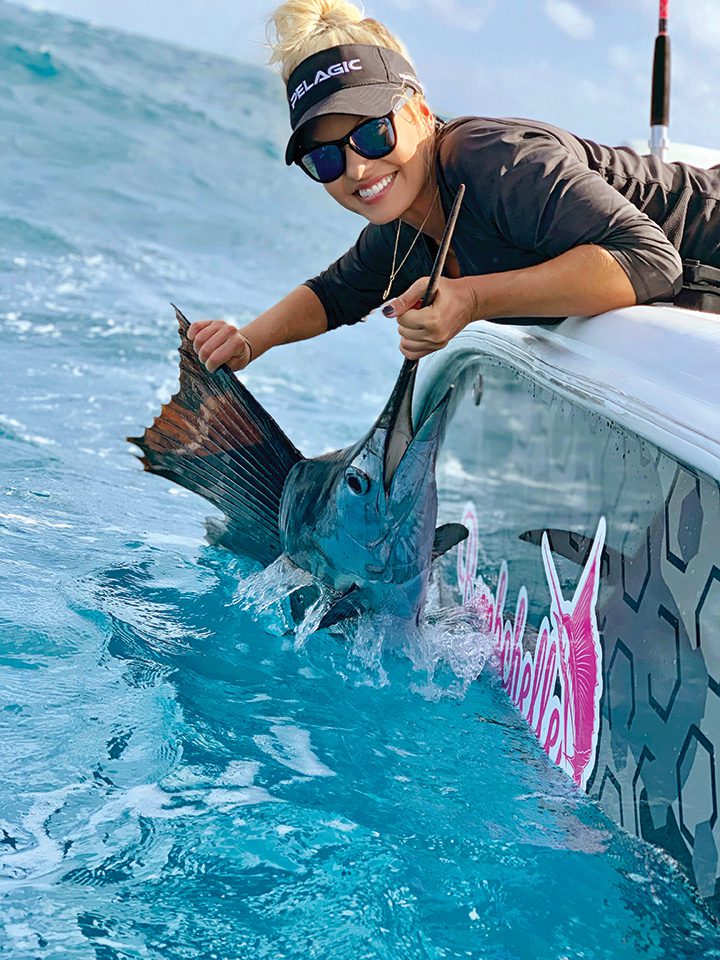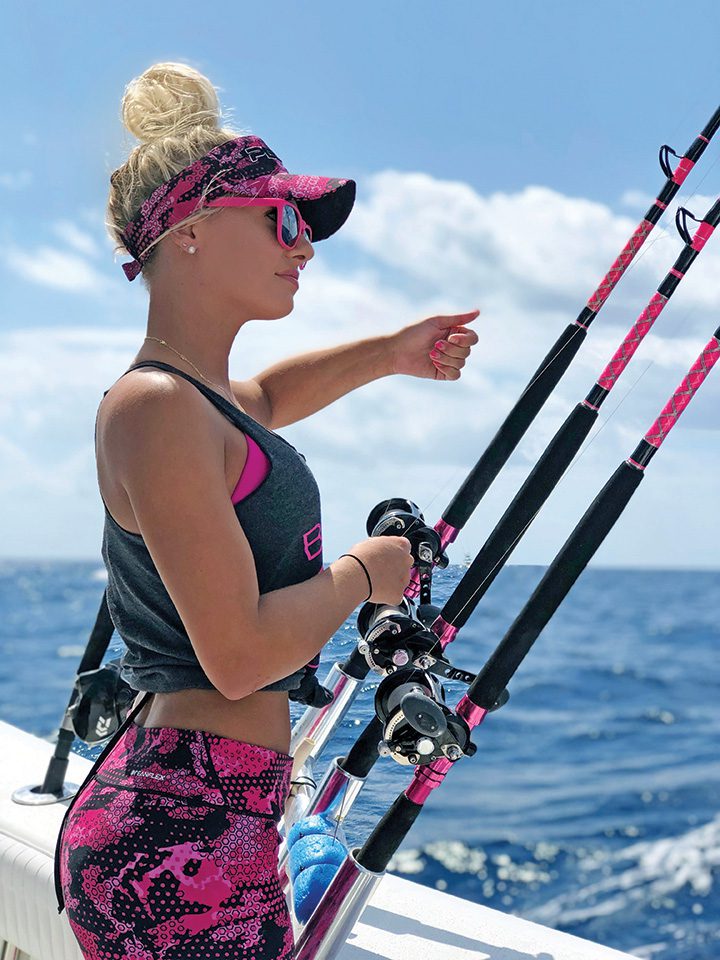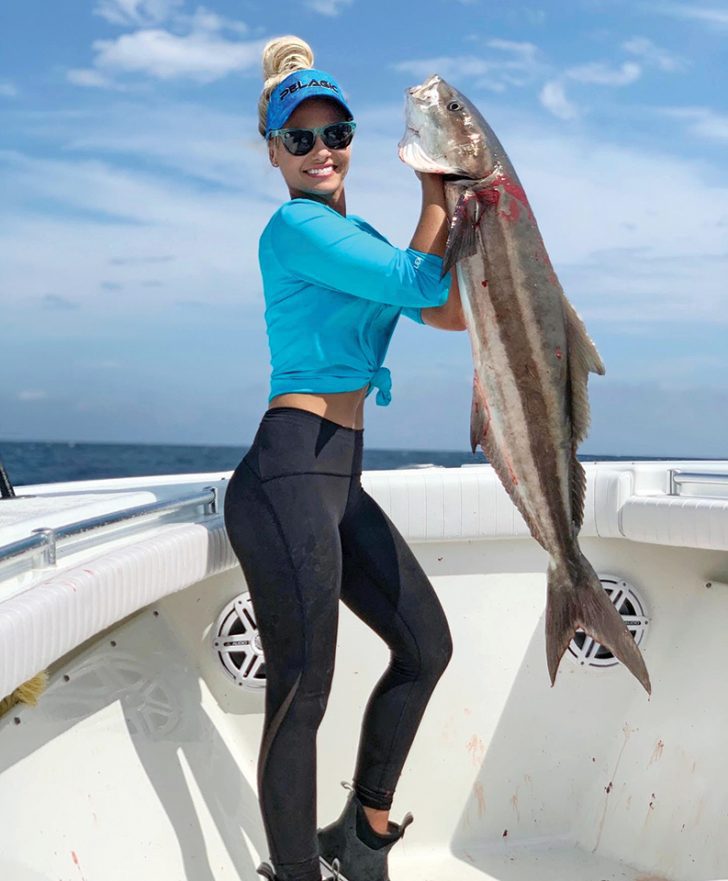By Michelle Dalton
Born and raised in South Florida, I’ve been privileged with the widest diversity of fishing opportunities in the country. From flats snook and deep-drop swordfish to trophy canal bass, I love it all. But there’s something about kite fishing for big pelagic gamefish that really gets me going.
Kite fishing is highly effective because the bait presentation appears natural and it allows you to cover lots of water for higher catch rates. The technique also provides the ultimate adrenaline rush, as you frequently get to watch the strike happen.
For those unfamiliar with kite fishing, let’s go over some of the basics.
Heading offshore, captains consider everything from water color and clarity to the presence of baitfish and birds to determine where to start fishing. I like to fish along an edge, where water color turns from green to a deep blue, usually somewhere in 100 to 300 feet of water.
There are different kite styles designed for different wind velocities, and these kites are typically launched and retrieved with an electric reel. Launching kites is by no means a piece of cake, but with the right equipment, patience and steady winds, a beginner can practice and perfect this skill.
Attached to your kite line are three release clips. Each clip is assigned to a rod. An experienced crew will fish three live baits off one kite, with each reel’s line clipped to the main kite line. Although it seems like this might create a big tangled mess, it’s actually rather organized.
Tackle typically consists of high-capacity baitcasting reels with ultra-smooth drags, spooled with 20- or 30-pound monofilament. Attached to your mono, above your leader, there are a few terminal tackle items that make up your rigs. First, a ceramic ring is attached to the kite line using release clips. Next, a foam neon float or marker dangles in the sky above each of your baits to help track them from a distance. From there, you have a small egg sinker to help maintain a vertical drop and keep the baits at the water’s surface. Finally, a bead separates the sinker from your leader.
Your leader depends on the targeted species. For the toothy critters, I use an 18-inch wire leader connected to fluorocarbon with an Albright knot and a 7/0 live bait hook. For sailfish, I use 10 to 12 feet of 60-pound flourocarbon leader with a 7/0 circle hook. Thin circle hooks allow easy hook-ups and safe releases, and they are now required by most sailfish tournaments. There’s no “setting the hook” with these; however, I do enjoy making fun of my bass fishing friends when they make the mistake of trying!
By paying close attention and adjusting the line, you can keep baits on the surface, making the slight commotion predators find irresistible. Instead lying in the water, your rigs are suspended in the air above the bait, completely out of sight of the fish.
When it comes to bait, I prefer goggle-eyes, threadfin herring and sardines. It’s important your baits have a hardy layer so their scales remain intact and their skin isn’t abraded. Healthy bait is far more likely to be eaten. Sailfish, in particular, know something is wrong with a lethargic bait; they likely won’t eat it. Weeks before kite fishing tournaments, my team and I routinely feed and nurture bait to keep it healthy and hardy.
If you’re fortunate enough to hook a sailfish, don’t immediately clear the other lines. Sailfish often travel in groups. Leave those other baits in the water for a better chance of getting additional bites during your drift.
Traditionally, when the wind starts to die down toward the end of spring, the number of boats trolling offshore grows. However, there is no shortage of boats kite fishing in South Florida year-round. Even with very little wind, a kite will fly with the help of a helium balloon.
Next time your friends want to troll around offshore, tell them to “go fly a kite!”
Michelle Dalton books charters through her social media pages: @Bombchelle_fishing.




